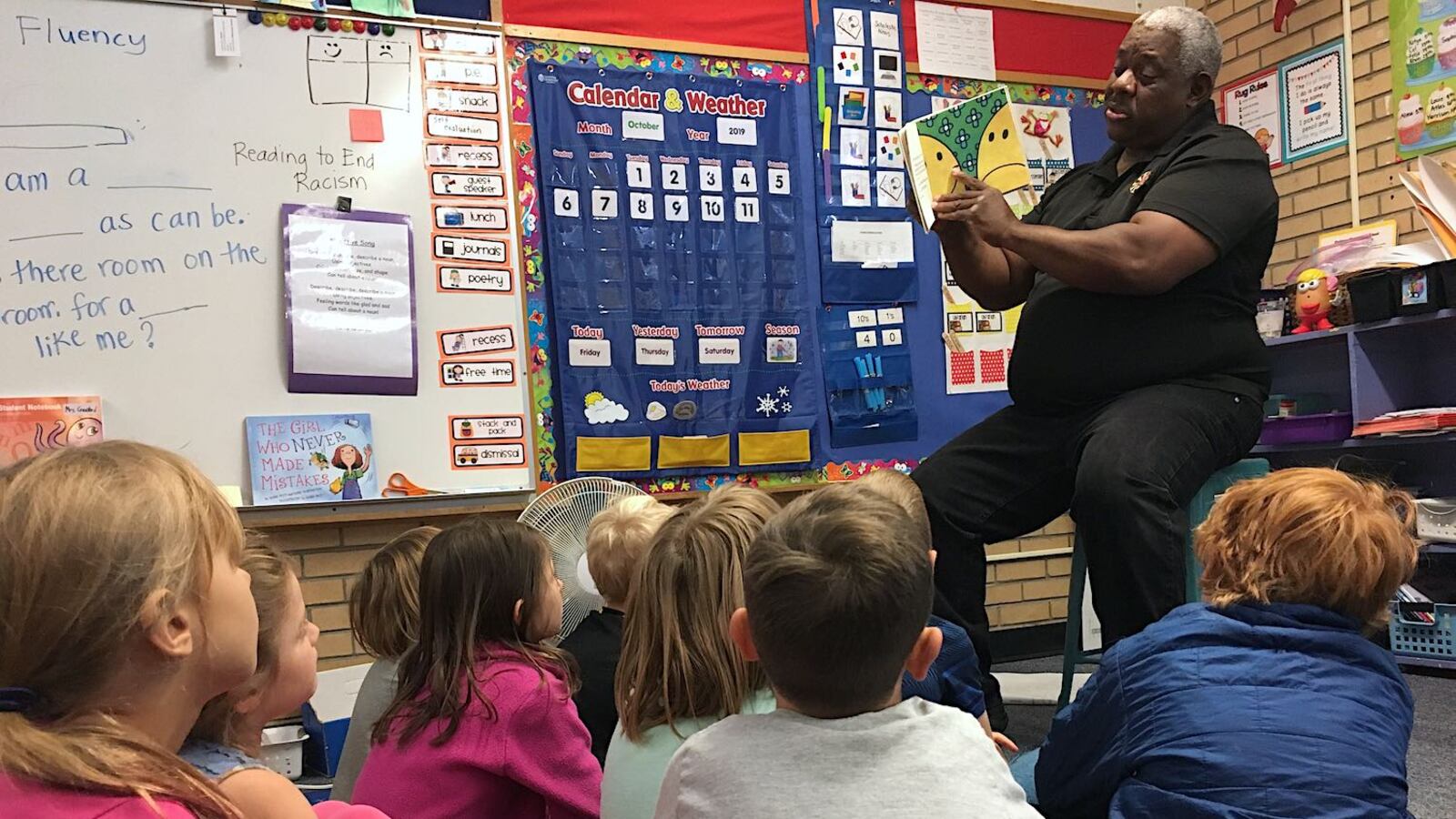No food, no pets, no cameras, no radios.
“You can only bring what you can carry,” Bob Harada told the fifth graders, standing at the front of their sunny classroom inside Boulder’s Flatirons Elementary School.
He wasn’t talking about an upcoming camping trip. He was painting a picture of the tough choices made by Japanese Americans — including his own parents — who were forced by the U.S. government to leave their homes for faraway internment camps during World War II.
Harada was one of a dozen volunteers who visited the school on a recent Friday as part of a program called Reading to End Racism. Run by YWCA Boulder County, the idea is to use storytelling to raise awareness about racism and discrimination, and encourage students to do something about it. Citing the current social and political climate, including a local incident earlier this month in which a white woman yelled racial slurs at a black college student, leaders say the program is as timely as ever.
“A lot of times kids feel like they don’t have the power to do anything and we’re coming in here to tell them you have the permission to do what’s right,” said Shiquita Yarbrough, the YWCA’s manager of community engagement and equity.
“By us coming into elementary schools, it’s giving the kids enough time to work on those skills because it’s not something that will change overnight,” she said.
While Reading to End Racism has been around in some form for years — an oral history dates the project’s inception to the 1990s — it’s expanding its reach this school year to 17 Boulder Valley schools, up from eight to 10 previously. The program visits participating schools once annually, with guest readers visiting every classroom to read and discuss a children’s book.
There are 250 books in the program’s library, some historical accounts of racism or oppression, and other more general stories about kindness and friendship. Titles include “Harvesting Hope,” about the life Cesar Chavez; “Of Thee I Sing,” Barack Obama’s tribute to 13 famous Americans; “Hidden Figures,” about the contributions of four black female mathematicians during the space race; and “Coolies,” about Chinese-American brothers who helped build the railroad.
Guest reader James Johnson brought two books to Stephanie Crawford’s first grade classroom: “Mr. Happy” and “Mr. Grumpy.” The books, which feature characters that are basically colorful shapes with faces, didn’t delve into racism, or any -ism for that matter.
But they did give Johnson a chance to introduce some new words — ally, ostracize and intervention.
“If I’m your ally, what does that mean?” he asked the children gathered on the rug in front of him.
They guessed “working together,” “being a friend,” being “a good teammate,” and standing up to a bully.
“Ally means a lot of things, he said genially. “It’s very important.”
Earlier that morning, Avi Edwards also talked about being an ally during her visit to a third- and fourth-grade classroom to discuss LGBTQ issues. There, she read, “Red, A Crayon’s Story,” about a blue crayon that the other crayons assume is red because of his red label.
Edwards, who described her own daughter’s struggle to come out as a lesbian years earlier, asked the children to talk about a time they saw someone, or were themselves, mistreated because of a difference.
Lots of students offered up examples — a girl said her brother accused her of acting “too much like a guy” and a boy recounted being pushed down and called a nerd for the way he threw a football.
Edwards asked the children how they can intervene when they see someone being mistreated.
“First check on them,” one girl suggested, “but then you can tell the person who’s doing that to stop.”
On the other side of the school, Harada read excerpts from a children’s history book on Japanese American internment camps. He mixed in details from his parents’ story, recounting how they were first housed in horse stables and then relocated on a train with blackened windows to a camp in southern Arizona.
They lived there in a tar paper shed for three years, he said. The constant blowing desert dust was why his mother stuck with her daily dusting habit even after they were freed and the family moved to Minnesota.
Harada asked the fifth graders lots of questions during his presentation. How would they feel if they suddenly had to sell all their possessions for next to nothing at a garage sale? How would they like to live in a space the size of one corner of their classroom?
And, of course, what would they bring with them if they were sent off to internment camps?
Lots said clothes. One said a soccer ball. Others said bolt cutters, sunscreen, and an air mattress.
Harada, a retired banker, began volunteering with Reading to End Racism about six years ago after hearing about the program through his church.
“I just feel it’s a good opportunity for me being Japanese American to talk about a subject that’s both personal, but also a good example of how racism really affects people,” he said. “I think it’s important to keep the story going.”

